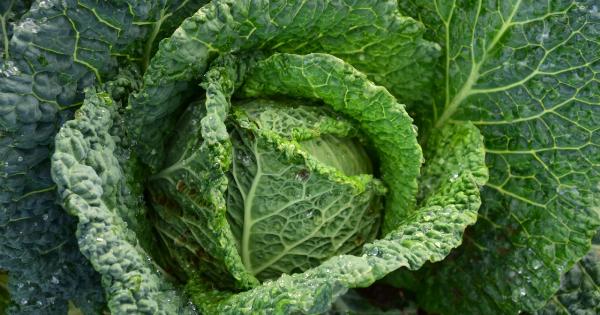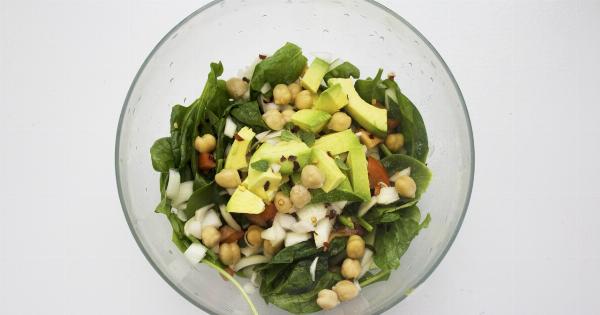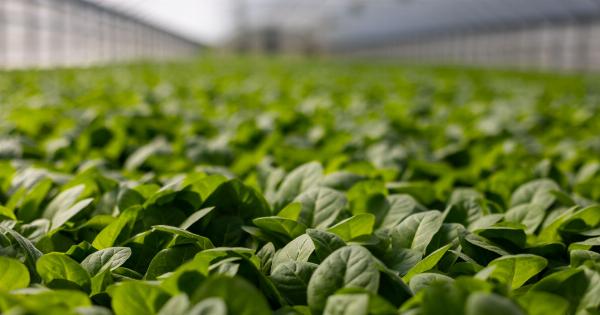Spinach is a leafy green vegetable that is packed with essential nutrients and is widely regarded as a superfood. However, it is important to know how to preserve spinach properly to maintain its nutritional value.
In this article, we will explore various methods to keep spinach fresh and nutritious for longer periods.
1. Harvesting Spinach
The first step in preserving spinach’s nutritional value starts with harvesting the vegetable at the right time. Spinach should be harvested when the leaves are tender and before they begin to yellow.
To ensure maximum freshness, pick spinach leaves in the morning when they are at their peak.
2. Washing Spinach
Properly washing the spinach is crucial to remove any dirt, debris, or pesticides that may be present. Fill a bowl or sink with cool water and immerse the spinach leaves. Gently agitate the leaves to loosen any dirt particles.
Repeat the process if necessary. Rinse thoroughly under running water to remove any remaining dirt or cleaning solution.
3. Drying Spinach
After washing, it is important to dry the spinach leaves before storing them. Excess moisture can promote the growth of bacteria or cause the leaves to wilt.
You can either use a salad spinner or pat the leaves dry with a clean kitchen towel or paper towels.
4. Storing Spinach in the Refrigerator
The refrigerator provides an ideal environment for preserving the freshness and nutritional value of spinach. Place the dried spinach leaves in a ziplock bag or an airtight container.
Ensure that the container or bag is sealed properly to prevent any air from entering. Store in the refrigerator at a temperature around 35-40°F (2-4°C).
5. Freezing Spinach
Freezing spinach is an excellent way to preserve its nutritional value for an extended period. Blanch the spinach leaves by briefly immersing them in boiling water for a few seconds, followed by immediate transfer to an ice bath.
This process helps retain the color, texture, and nutrients. After blanching, remove excess moisture and transfer the spinach to freezer-safe containers or ziplock bags, then store them in the freezer at 0°F (-18°C) or below.
6. Spinach Smoothies
If you prefer consuming spinach in the form of smoothies, you can blend fresh spinach leaves with fruits, yogurt, and other ingredients.
Though blending can cause some nutrient loss, drinking spinach smoothies immediately after preparation can help retain most of its nutritional value.
7. Cooking Methods
The cooking methods used for spinach can significantly impact its nutritional content. Lightly steaming spinach or sautéing it with a minimal amount of oil can help preserve more nutrients compared to boiling.
Boiling spinach may cause some water-soluble vitamins to leach out. However, regardless of the cooking method, spinach still remains a valuable source of nutrients.
8. Spinach as an Ingredient
Using spinach as an ingredient in various dishes can help preserve its nutritional value as it is not exposed to high heat or cooking for prolonged periods.
Add fresh spinach leaves to salads, sandwiches, wraps, or top them on pizza and pasta for an extra nutritional boost.
9. Avoiding Overcooking
Overcooking spinach can lead to a significant loss of vitamins and minerals. To preserve its nutritional value, avoid cooking spinach for too long. Cook until the leaves are just wilted and vibrant green.
10. Purchasing Fresh Spinach
Lastly, buying fresh spinach from reputable sources is essential to ensure you are starting with high-quality produce. Look for vibrant green leaves that are free from yellowing or wilting.
Organic spinach may be a good choice to avoid any potential exposure to harmful pesticides.






























